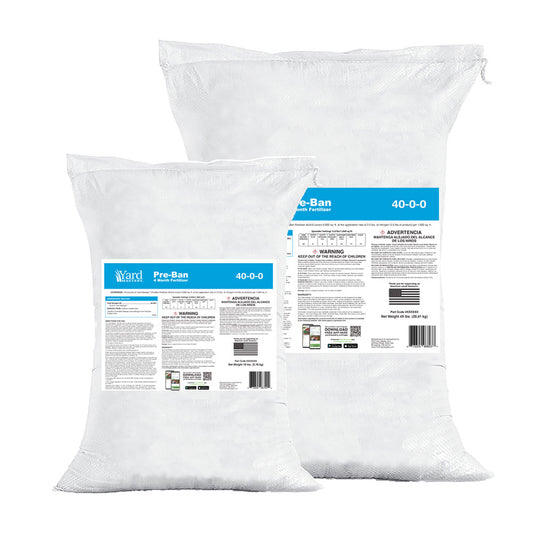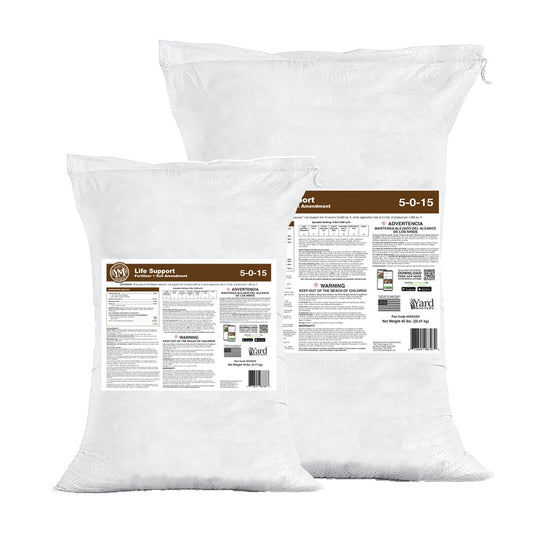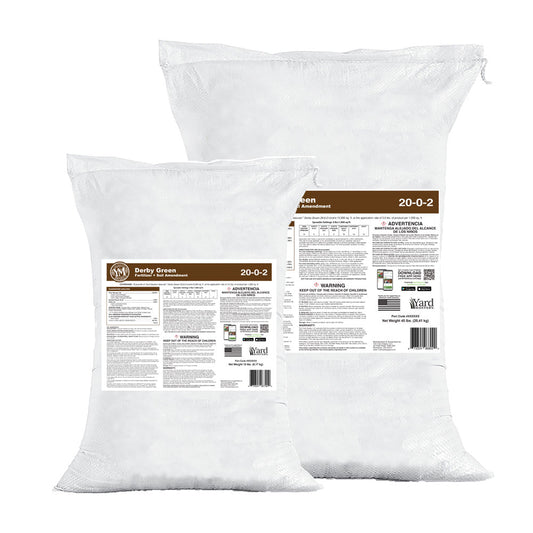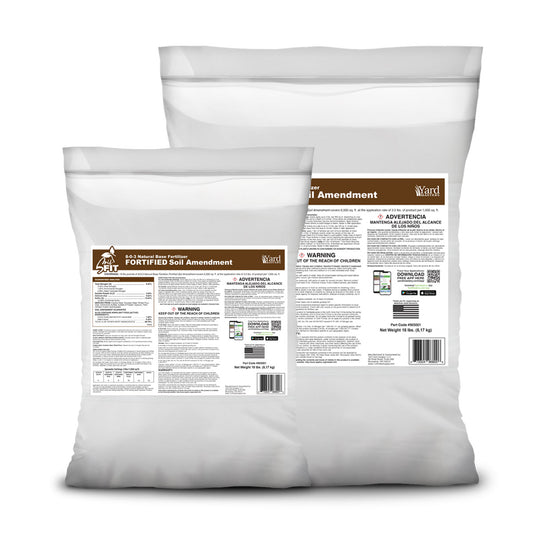Are Lawn Chemicals SAFE?
I had a question come in from one of our members in Yard Care BootCamp and I thought the answer would benefit many of you since it’s one we get quite often at Yard Mastery.
JF asks:
“Hi - I want to start using the YM fertilizer, weed control, and bio-stimulants but I need to get a solid understanding of the product safety as we have a 1-year-old that plays in the yard a lot. I think I can explain the fertilizer and bio-stim safety (just adding more of natural elements, right?).
But, what about weed control (pre and post emergent)? How would you explain the safety of these products to someone to make them feel comfortable about using it? Especially someone who sees all of it and just thinks of Roundup being linked to cancer risk.
Note, I'm planning to use the all-granular program this year, and maybe try the hybrid next year. Since this is a general question across several categories I thought I would just post in this section since I have a cool season lawn. Thanks!”
-----------
I saw this question late Saturday morning this past weekend and typed out this response that I have now cleaned up for this email - here are my thoughts:
Are Lawn Chemicals Safe?
This is always a challenging conversation, but also one that is important to have with your family.
Let me first cover the Yard Mastery Fertilizers - you are correct those are just nutrients. Nitrogen, phosphorus, potassium, chelated iron, manganese, zinc and magnesium - all elements that support healthy turf growth. They are synthetically derived nutrients - kind of similar to how you can take a daily multivitamin (synthetic) and get 100% of most things you need or you ca eat an entire produce section to get what you need. That’s the “synthetic vs natural” nutrient analogy I’ve always used.
We do have a natural additive in our ferts called “Bio-Nite” which is in every bag and is the Florida version of Milorganite. I include this as a way to feed the microbes in the soil and add carbon.
Bio-Stimulants are essentially carbon materials and sea kelp mixed with various nutrients in different formulations. The primary elements in the bio-stimulants are humic substances, sea kelp and various nutrients like iron, nitrogen and potassium.
One of the formulations, De-Thatch, utilizes molasses to attract microbes into the thatch layer to consume it. That one is meant to be applied in the summer, on the hottest days.
These bio-stimulants have been used by farmers and natural gardeners for many years and ultimately, the goal with them is to improve the soil’s ability to hold water and nutrients over time. Healthy soil is the foundation of a healthy lawn.
There are no pesticides in any of them.
Side note: don’t be scared of the word “chemical” in general. After all, water, H2O is a chemical. So is vinegar which is CH3COOH. I usually stay away from the word chemical because it’s too general to describe most things, but I’ll use it in this article just to add context.

Pesticides - The Chemicals That Kill
Now let’s get to the scary chems, the “ides” as I call them. I’m talking about Pesticides.
The word “pesticide” literally means “to kill pests.” You know the “ides” we use most often which are Herbicides (vegetation killer), Insecticides (insect killer) and Fungicides (fungus killer). Here’s how I have always approached their use:
First and foremost, always read the label of the product you are applying and follow it. Read it before every application, even if you’ve applied the product before, read the label, every time. There you will find information on re-entry periods (how long to keep people and pets off), temperature or wind restrictions, if the product should be watered in, with how much and how soon… or not watered in at all. You’ll also get condition recommendations such as timing of applications as preventive or curative.
You’ll learn a lot when you read the label. And that will translate to confidence. Confidence leads to quality applications and therefore better results. Having high quality equipment that you are familiar with is also important. Once you learn your equipment, you will make better quality applications.
Quality, accurate applications bring better results which means fewer followup applications are needed, reducing overall chemical usage.
PPE (personal protective equipment) is important as well. It’s usually long pants, long sleeves, eye protection, socks + shoes and rubber gloves for stuff I utilize and recommend. That’s pretty typical for the stuff in my programs.
All of this is on the label for a good reason. Smart people (like EPA smart people) have learned that if you follow those guidelines it presents "minimal risk."
Integrated Pest Management
Now there is also an approach to lawn care that I practice called Integrated Pest Management (IPM). In short, IPM states that you only use the pesticide when it’s absolutely necessary and when you do use them, choose the lowest impact way.
In JF’s example above, he asked about pre and post emergent herbicides and he has a cool season lawn.
Pre-Emergent Herbicides
So for example, with prodiamine pre-emergent - it’s a herbicide and it’s a big part of our strategy with cool season lawns because it stops crabgrass. Once watered in, prodiamine leaves a vapor barrier just below the soil surface. That barrier stops the crabgrass by interrupting cell division in the young plants. Here is a detailed blog post I wrote about how prodiamine works.
Prodiamine in spring is a defensive strategy against weeds, primarily crabgrass in cool season lawns.
In following IPM practices, right off the bat, I can tell you that I don't recommend applying prodiamine in heavily shaded areas of the lawn. That’s because crabgrass doesn't grow in the shade typically, so I don't use prodiamine herbicide where it’s not needed. That's putting less "pounds on the ground" and is an example of IPM. It also saves money.
Another way to practice IPM with prodiamine is reduction over the seasons. I have learned from experience that after 3-4 years of use, with the help of a thick lawn, you can pretty much eliminate crabgrass in your lawn all together.
Playing defense for that 3-4 years literally gives the large percentage of the seeds in your soil the chance to germinate and hit that barrier so they cannot reproduce. Each year, the following generations are lighter and lighter as new seeds are not being dropped. So you can stop using prodiamine pre-emergent after 3 years or so. That’s IPM in action.
Post Emergent Herbicides
Staying with crabgrass as our example, there can and will be “escapees” that make it through the prodiamine barrier. Crabgrass is often found along edges where turf meets concrete. It’s very important when this happens that you be ready to hand pull or spot spray quinclorac on these escapees early, before they can go to seed. (Video on the life-cycle of crabgrass)
Can you see how the Integrated Pest Management approach is coming into play and reducing chems overall and by default, reducing risk?
We can also look at post emergent weed killers (herbicides).
These can be scary because they have a distinctive odor. One of the weed controls I recommend is called Triad Select and it’s got a tried and true 3-way mix of active ingredients that work well on broadleaf weeds in cool season lawns. The three actives are 2,4-D, MCPA and dicamba. These are auxin herbicides and their smell when sprayed is distinctively “chemically smelling” (technical terminology there! Ha ha!)
I actually like the smell of auxin herbicides, but I am a nut! And you shouldn't mention that during your safety talk with your family either! And what you’ll find is that I almost always recommend you control weeds post-emergent by mixing concentrated liquids like Triad Select into water and spot or zone spray the weeds. Way back in my famous church lawn series you can see me using a similar weed control (store bought) and teaching you about zone spraying.
I’m not a fan of the traditional granular “weed and feed” that you find on the shelves of HD and Lowes. It doesn’t fit into my IPM approach.
Weed and Feed - Not Integrated Pest Management
A "weed and feed" is fertilizer mixed with weed killer in granular form.
I don't recommend these because in most cases, weeds are not covering 100% of a lawn. They are typically in patches or zones. So I recommend mixing a concentrate in water and spot spraying with liquid rather than broadcasting weed killer over the entire lawn even in areas where it's not needed.
With a granular weed and feed, you have no control over this, you have to throw the herbicide everywhere. When you use liquid and spot spray, you reduce the overall “pounds on the ground” of herbicide and in my opinion, liquids work much better on broadleaf weeds than do granular post emergent herbicides anyway.
With post-emergents, timing can also reduce your use! If you get on top of the weeds diligently, they will not reproduce (go to seed) and you can eliminate them to the point where you only have to hand pull in the future.
Following this goal, you can reduce your herbicide usage to nearly nothing in 3 years or so.
And this doesn’t even mention the importance of mowing. If you take your mowing up to twice per week you will reduce some weeds just by cutting off their ability to to go seed. This also helps the lawn to get thicker and we know that growing a thick lawn is the ultimate way to reduce your use of herbicides. If all the space in the soil is taken up with grass roots, there will be little to know room for weed roots.
And then that brings us back around to the fertilizers and bio-stimulants. Those help you achieve that thicker lawn, quicker, again, reducing herbicide usage and fitting into our IPM approach.
It’s Ok To Have Some Weeds In The Lawn
Another thing that is overlooked is that it is ok to just live with some weeds in the lawn. You don't have to kill them all - I have weeds in my lawn too - we all do, so you can reduce the amount of herbicides you’re using just by being willing to live with some weeds that you hand pull while you’re mowing. If you pull 10 weeds every weekend that is 300 weeds in 30 weeks of mowing. That will make a HUGE difference, chemical free!
Bringing This All Together
If you make it your goal to reduce and even eliminate the use of pesticides in your lawn, then the conversation you have with your family changes. Instead of trying to convince someone on why chemicals are safe or not, it’s more about using them in the beginning, as needed, with the aim to reduce and eliminate them in time.
At the end of the day, I can’t tell anyone that using pesticides is “safe.” I really can’t say that about anything in life. I know people who are allergic to peanuts, even organic peanuts.
But what I can do is present to you the best way I know to go about using them in a responsible manner that will still get you results with the ultimate goal being a thicker lawn, and a reduction or elimination of pesticides all together. This is very achievable, especially with a cool season lawn where winter serves as a reset button every season.
Throw’er down, and hope for the best.






